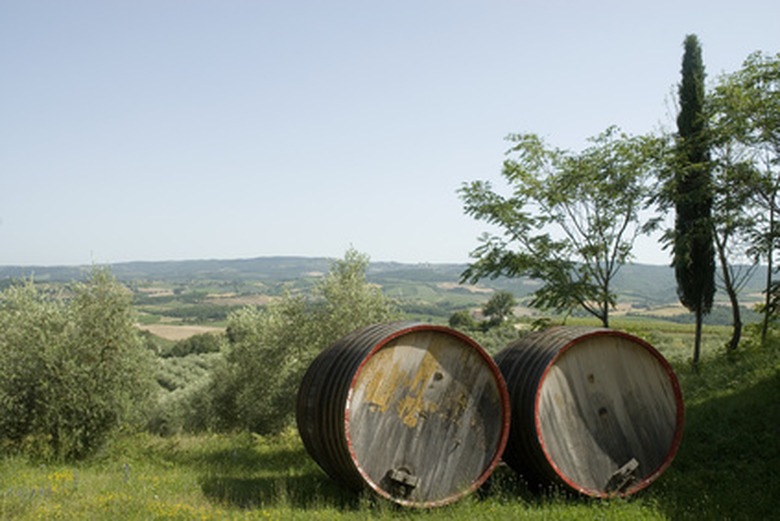Italian Cypress Tree Root Structure
Italian cypress (Cupressus sempervirens) is an eye-catching specimen tree, growing in a tall, dark green column 40 to 60 feet into the air. The base only reaches a diameter of 3 to 6 feet, and stays relatively even up the length of the tree, adding to the visual appeal. The root system is designed to provide the maximum amount of nutrients that will help Italian cypress grow taller, while providing the minimum support needed to hold up its pole-like form.
Type
Like most cypress trees, Italian cypress trees are anchored by a fibrous root system. Fibrous roots branch out relatively evenly through the soil, creating a matting network in the top layer of soil. For mature Italian cypress trees, the roots can go down several feet, depending on the structure of the soil or the size of the container. Fibrous roots don't anchor as well as tap roots, but the pencil-like upper structure of the Italian cypress tree keeps it from capturing too much wind in storms, putting less stress on the root system.
- Italian cypress (Cupressus sempervirens) is an eye-catching specimen tree, growing in a tall, dark green column 40 to 60 feet into the air.
- Fibrous roots don't anchor as well as tap roots, but the pencil-like upper structure of the Italian cypress tree keeps it from capturing too much wind in storms, putting less stress on the root system.
Benefits
Fibrous root systems are designed to absorb nutrition from the maximum area possible. Several fibrous roots have far more area than a single tap root and its lateral roots. So what the Italian cypress tree risks by having poorer anchoring, it makes up for with more contact points with the soil for access to moisture and nutrients.
Interactions
Italian cypress trees are valued in the landscape not only for their stunning design value, but because they don't have thick lateral roots that would hamper planting near them. Grass, annuals or shrubs can be comfortably planted near Italian cypress with minimal competition. Avoid planting varieties with high water requirements close to Italian cypress to help prevent root diseases.
Cultivation
Water Italian cypress deeply to establish, but not too often. Drip systems or soaker hoses work well for this. The idea is to encourage the root systems to grow deeply in search of water. Frequent light watering only encourages the top roots to develop, reducing drought tolerance later in the life of your Italian cypress tree. Plant in well-drained soil, away from low-lying areas that might hold water for extended periods.
- Fibrous root systems are designed to absorb nutrition from the maximum area possible.
- Several fibrous roots have far more area than a single tap root and its lateral roots.
Problems
Phytophthora and root rot can be a problem for Italian cypress root systems in poorly drained soils. Avoid watering too often or planting in hard clay soils to reduce chances of root rot becoming a problem. According to the Urban Forest Ecosystems Institute, Italian cypress is resistant to Texas root rot. However, conditions that would encourage Texas root rot also encourage phytopthora and root rot.
